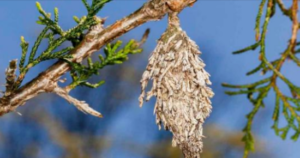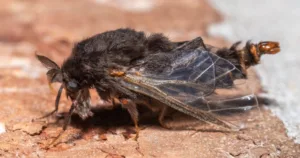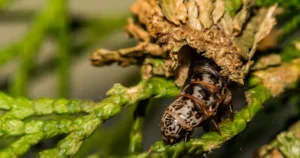
The Evergreen Bagworm, though not a worm but a moth in its larval stage, poses a significant threat to various trees. These tiny, deceptive creatures construct protective cases around themselves made of plant debris, attaching them with silk-like threads. They’re known for their voracious appetite, devouring tree foliage, which hampers the tree’s ability to photosynthesize, weakens it, and makes it more susceptible to other stressors, potentially leading to tree decline or death.

Understanding their life cycle is crucial for effective management. Female adult moths lay eggs in their bags, which hatch into tiny larvae in late spring or early summer. These larvae create and live inside their protective bags, growing and molting as they mature. In late summer or early fall, they reach their final instar and pupate within their cases, later emerging as adult moths.

To manage infestations, you can manually remove bagworms for small cases or prune and destroy affected branches for larger infestations. Natural predators like birds and parasitic wasps offer biological control. Chemical control should be a last resort.
Prevention is key: regular tree inspections, maintaining proper spacing, pruning dead branches, and promptly removing any bagworm bags you find during inspections can protect your trees and maintain a healthy landscape.





